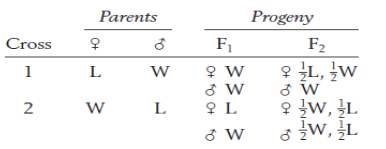#Question id: 10427
#Unit 6. System Physiology – Plant
#Question id: 10428
#Unit 6. System Physiology – Plant
Match the following column given fluence with its induce phytochrome responses;
|
COLUMN A |
COLUMN B |
|
A) low-fluence responses (LFRs) |
i) do not show
Photoreversibility while Law of Reciprocity is followed |
|
B) high irradiance
responses (HIRs) |
ii) Shows the Photoreversibility
and also the Law of Reciprocity is followed |
|
C) Very low fluence response
(VLFR) |
iii) It will absorb red and blue
light and responses is measuredly recepted by phytochrome A |
|
|
iv) In dark-grown: far red,
blue, UV-A recepted by Photoreceptor phyA and cryptochrome |
|
|
v) ) It will absorb Red, far-red
and responses is measurely recepted by phyB, phyD, phyE |
Match the following combination with its correct responses;
#Question id: 10429
#Unit 6. System Physiology – Plant
#Question id: 10430
#Unit 6. System Physiology – Plant
#Question id: 10431
#Unit 6. System Physiology – Plant
#Question id: 10432
#Unit 6. System Physiology – Plant

